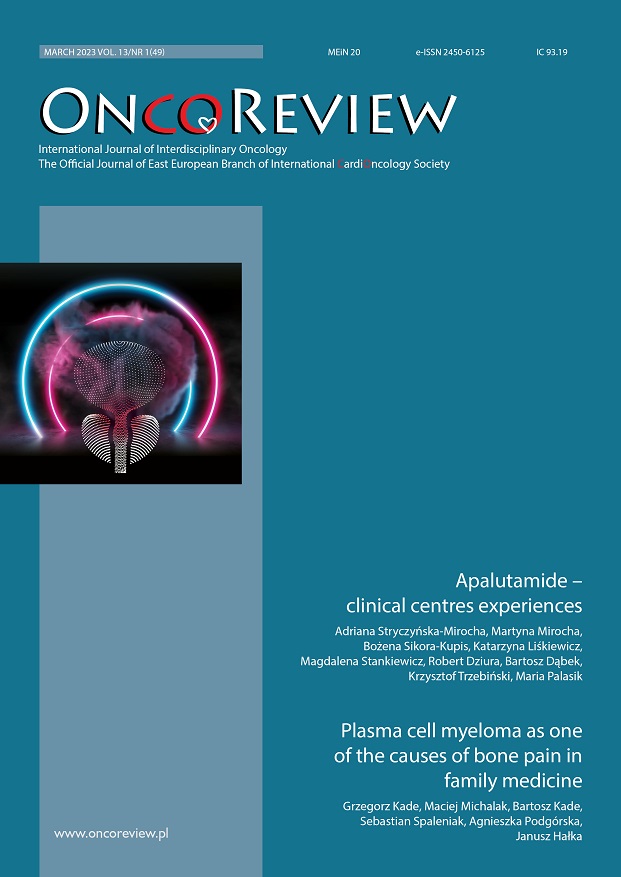Prostate cancer in an elderly patient with a history of comorbidities Case report
Main Article Content
Abstract
Prostate cancer is the most common cancer in men in Poland. The choice of treatment method depends on many factors, including the stage of the disease, the patient's age, life expectancy, the presence of comorbidities and the general condition of the patient. Hormone therapy is one of the basic methods of prostate cancer treatment, both in adjuvant and palliative treatment. Castration-resistant prostate cancer is an incurable disease. However, the introduction of new hormonal drugs to therapy significantly extended the survival time of patients with relatively low harmfulness of therapy.
Downloads
Metrics
Article Details
Copyright: © Medical Education sp. z o.o. This is an Open Access article distributed under the terms of the Attribution-NonCommercial 4.0 International (CC BY-NC 4.0). License (https://creativecommons.org/licenses/by-nc/4.0/), allowing third parties to copy and redistribute the material in any medium or format and to remix, transform, and build upon the material, provided the original work is properly cited and states its license.
Address reprint requests to: Medical Education, Marcin Kuźma (marcin.kuzma@mededu.pl)
References
2. Parker C, Castro E, Fizazi K et al. Prostate cancer: ESMO Clinical Practice Guidelines for diagnosis, treatment and follow-up. Ann Oncol. 2020; 31(9): 1119-34. http://doi.org/10.1016/j.annonc.2020.06.011.
3. Shore ND, Morgans AK, Ryan CJ. Resetting the Bar of Castration Resistance – Understanding Androgen Dynamics in Therapy Resistance and Treatment Choice in Prostate Cancer. Clin Genitourin Cancer. 2021; 19(3): 199-207. http://doi.org/10.1016/j.clgc.2020.08.008.
4. Mottet N, Cornford P, Van den Bergh RCN et al. EAU -EANM-ESTRO-ESUR-ISUP-SIOG Guidelines on prostate cancer, Limited text update March 2022. European Association of Urology. 2022.
5. Vidal N, Rivas Gomez J, Fernández L et al. The past, present, and future of non-metastatic castration-resistant prostate cancer (nmCRPC): a narrative review. Precis Cancer Med. 2022; 5: 14. http://doi.org/10.21037/pcm-21-34.
6. Parker C, Castro E, Fizazi K et al. Prostate cancer: ESMO Clinical Practice Guidelines for diagnosis, treatment and follow-up. Ann Oncol. 2020; 31(9): 1119-34. http://doi.org/10.1016/j.annonc.2020.06.011.
7. Mori K, Mostafaei H, Pradere B et al. Apalutamide, enzalutamide, and darolutamide for non-metastatic castration-resistant prostate cancer: a systematic review and network meta-analysis. Int J Clin Oncol. 2020; 25(11): 1892-900. http://doi.org/10.1007/s10147-020-01777-9.
8. Smith MR, Saad F, Chowdhury S et al. Apalutamide Treatment and Metastasis-free Survival in Prostate Cancer. N Engl J Med. 2018; 378(15): 1408-18. http://doi.org/10.1056/NEJMoa1715546.

